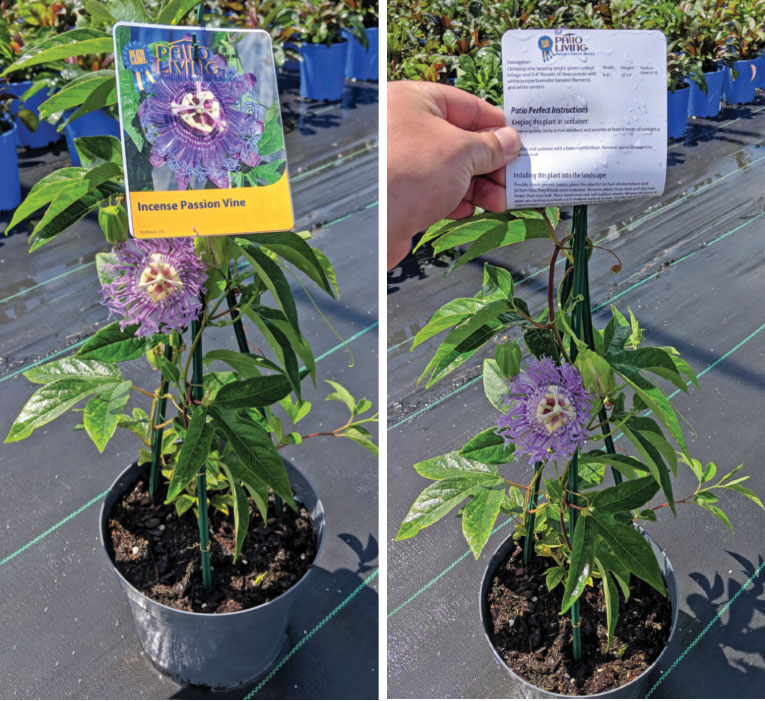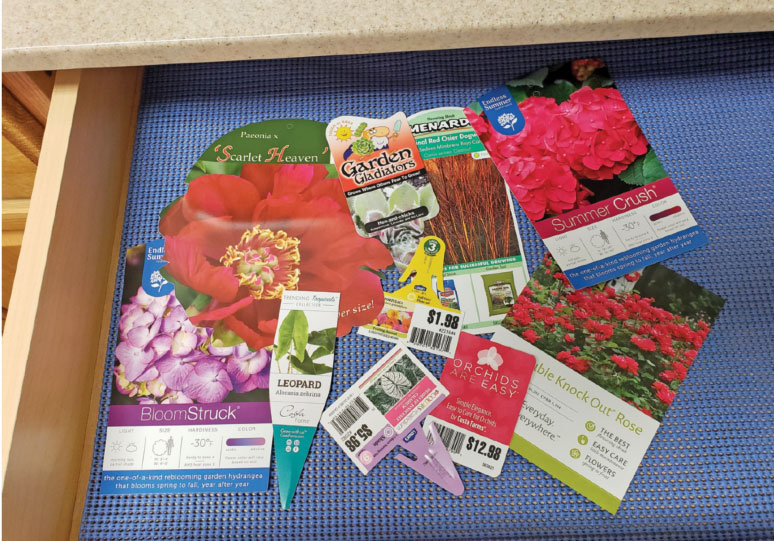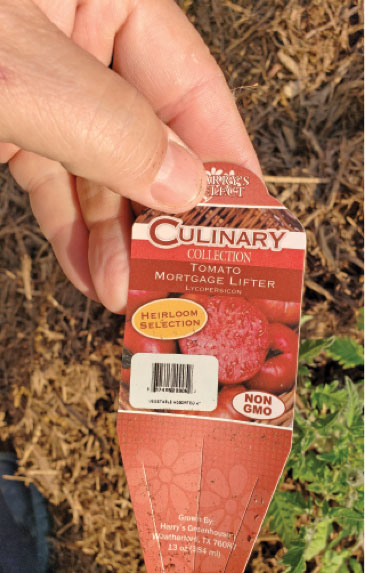3/1/2020
Survey Says
Todd Davis

Good news, Green Industry: The drawer full of plant tags is still alive and well in the homes of American gardeners.
Despite having more computing power in their pockets than NASA used to send men to the moon, consumers of all ages still rely on plant tags and labels as their primary source of information on the plants they buy. And a vast majority keep their tags and store them for later reference.
These are findings of a Fall 2019 survey of garden consumers by the Home Garden Panel, an industry-funded research group. The survey also found that tags and labels highly influence plant purchases.
Pictured: Six in 10 gardeners say they make purchasing decisions based on information they read on tags.
The survey, conducted with shoppers at both independent and big box retail stores, showed that 90% of consumers reference tags while shopping. This was true across the board for both younger and older shoppers.
And plant tags were easily the No. 1 source of information shoppers used in stores, far outpacing their mobile phones and store employees. Seventy percent of shoppers preferred to reference plant tags versus just 17% who preferred their phones and 10% who preferred to ask an employee.
The age group that preferred using their phones most were 31 to 40 year olds. But even with this group, only 28% preferred their phones versus 61% who preferred tags.
What about Millennial shoppers? Twice as many consumers aged 18 to 30 preferred tags over their phones as a primary information source on plants.
Tags also drive sales—six in 10 customers surveyed said they made plant purchases based on what they’d read
on a label.
What do they want on a tag?
The No. 1 piece of information consumers want on the tag is the retail price. The survey showed 95% of shoppers think having the price on the tag is important.
For growers, providing retail pricing on a tag can be difficult and time consuming, but obviously, it does provide an advantage.
And for plant-growing tips, gardeners most often seek information on:
• Light requirements (sun/shade)
• What type of plant it is (annual, perennial, etc.)
• Watering instructions
• Plant name
Some shoppers did indicate they desired information on blooming season, plant height/width, special attributes, fertilizer requirements, companion plants, cold hardiness and spacing, but far less than the bulleted points above.

Saving for later
One of the more surprising results of the survey was just how many gardeners hold on to their tags and how often they reference them later. Three quarters of all shoppers indicated they kept plant tags for future reference. Again, there was very little difference in response from younger and older shoppers. Pretty much everyone considers tags valuable enough to keep for later.
And where do they store them? Most people indicate they keep them in their home in a drawer or a container. The exception is with vegetable tags, where most people prefer to plant them in the soil with the plant.
Pictured: Drawers full of plant tags are still commonplace for home gardeners across the United States.
Oddly enough, shoppers over 60 are also more likely to place tags in the soil rather than storing them indoors. One might speculate this is because older shoppers forget where they place them when they store them inside. Again, this is just speculation.
And how often are gardeners referencing these tags? More often than you think. Virtually everyone (98%) that keeps tags repeatedly go to them for information in the future. Forty-four percent reference them once or twice a season, while 42% say they reference them once every few weeks. More than one in 10 shoppers (12%) say they reference their tags every week.
Removable tags are preferred
Given that shoppers prefer to keep their tags for later, it only makes sense that they prefer removable tags over adhesive tags stuck to the sides of pots. The survey reflected this.
When given the option, 70% of shoppers said they’d prefer a plant with a removable plant label. Seventeen percent had no preference, while 14% preferred sticker labels.
So what does all this information mean for growers? First off, it obviously means that you shouldn’t treat your tags as an afterthought; the tag is a vital component of the total package you’re selling.
 In addition to being the primary source of information gardeners need to succeed, labels also entice shoppers to buy. So by providing better tags, you’re also ensuring better sell-through at the retail location.
In addition to being the primary source of information gardeners need to succeed, labels also entice shoppers to buy. So by providing better tags, you’re also ensuring better sell-through at the retail location.
Pictured: While most plant tags are stored indoors for later use, vegetable gardeners tend to place their tags (like this one) in the ground next to the plants.
Maybe the biggest take-home from the survey is that despite having full Internet access in their pocket, shoppers still think tags are the most reliable source of growing tips. This is vital because it still means we still dictate the information gardeners use.
Consumer researchers are often quick to say that modern shoppers are leery of store- or brand-provided information on products. They say consumers ignore in-store information, instead preferring ratings, comments and recommendations they find online. But this survey shows that garden consumers haven’t reached this level of mistrust.
Rather than pulling information from the Internet that can be wildly unpredictable and inaccurate, data and tips provided on the tag by the industry itself is still considered most valuable.
As an industry, we need to continue to take advantage of this and provide consumers the best and most accurate information possible. GT
Todd Davis is Director at Orora Visual in Mesquite, Texas.